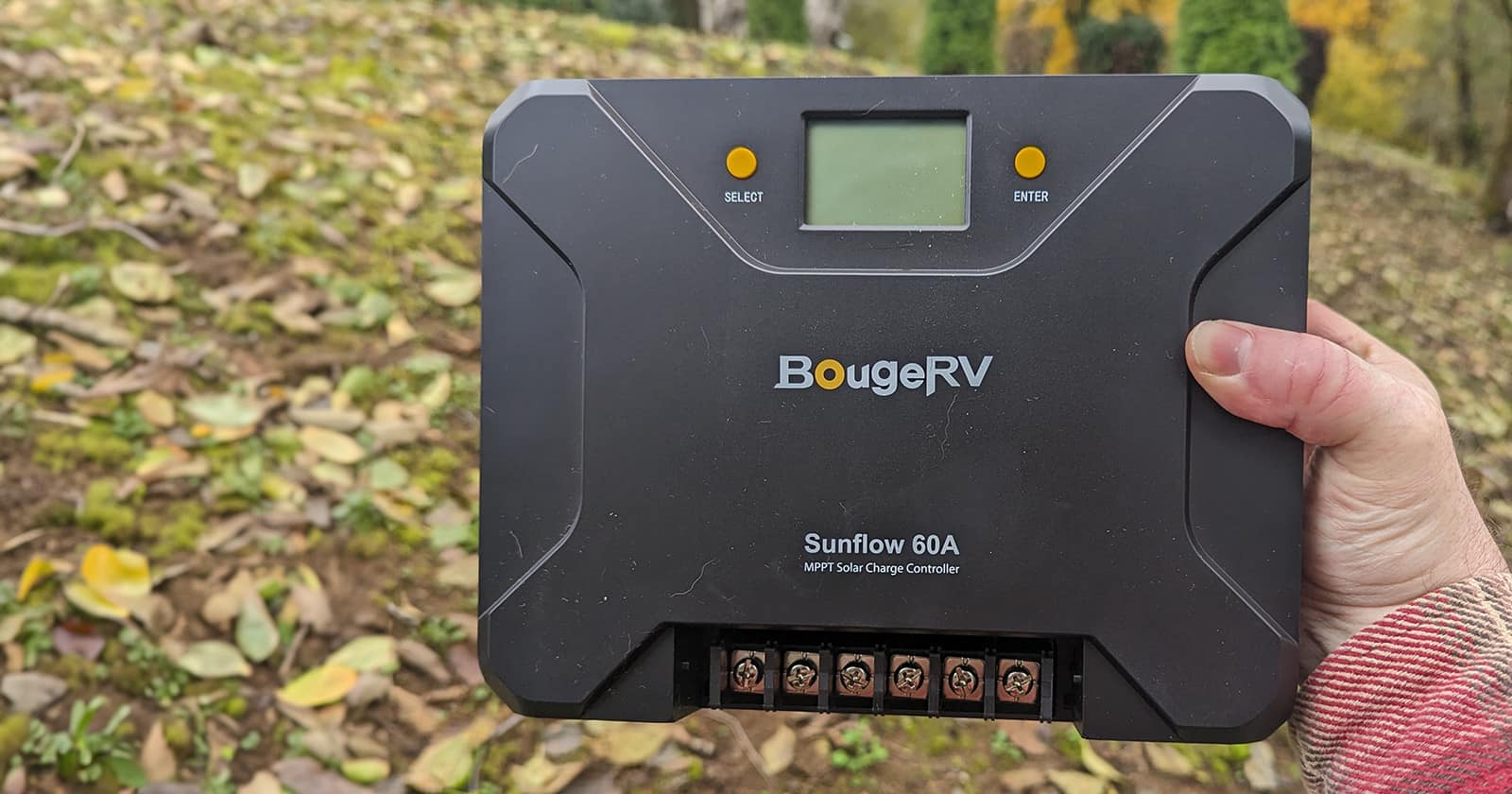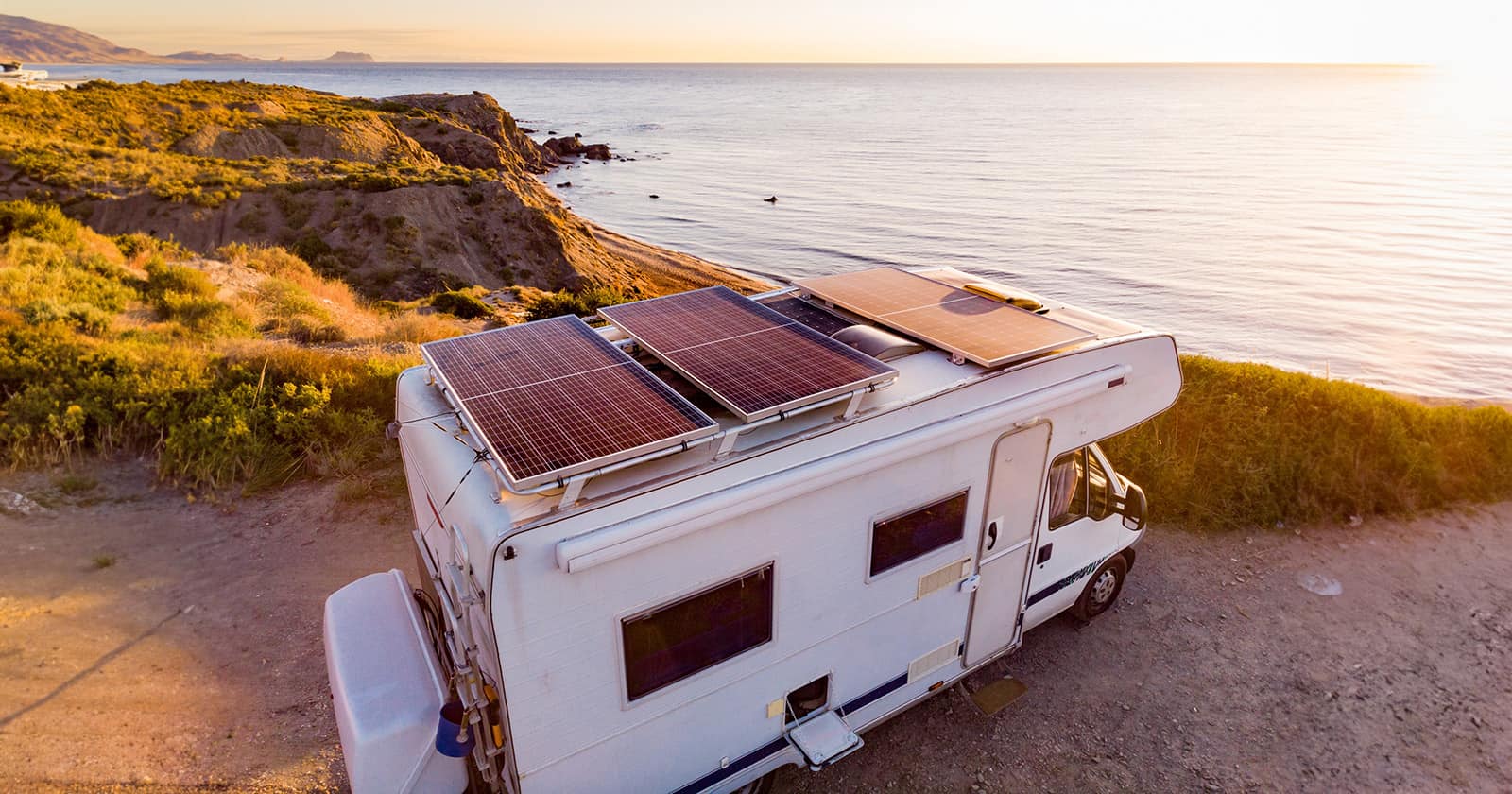Ever since I embraced the RV lifestyle nine years ago, I wanted a really good solar setup, and recently, I had the opportunity to delve deeper into the world of solar energy, thanks to BougeRV. They sent me an entire solar setup that included their Sunflow 60A MPPT Solar Charge Controller, which I reviewed separately. This time, I’m turning my focus to BougeRV’s 200W Bifacial Solar Panels.
These aren’t your average solar panels; they offer a unique twist on solar energy collection. As I share my experience with these panels, we’ll look at their features, installation process, and real-world performance.
What Makes Bifacial Solar Panels Stand Out?
Now, let’s talk about what makes these bifacial solar panels different. Traditional solar panels collect light from one side of the panel. Bifacial solar panels, on the other hand, take advantage of all of the panel real estate. They collect the sun’s rays from the top, and they also harness light reflected off surfaces below – think of the ground, snow, or even your RV’s roof.

This dual-sided action means more bang for your buck in energy collection. Especially since we can’t always park our RV in the exact position to maximize solar energy. Being able to take advantage of the light reflected off the RV’s roof can make up for not being able to fix your solar panels directly at the sun.
BougeRV 200W Bifacial Solar Panels Features and Tech
What’s amazing about these panels is their claimed ability to churn out 30% more solar output. This is largely thanks to their ingenious transparent backside, which grabs solar energy not just from above but also from reflected and diffused light sources around them.
The versatility in placement is another game-changer. No need for the sun-gymnastics to get them facing just right. They’re pretty forgiving and flexible, absorbing sunlight no matter how the sun dances in the sky. And for those who like a bit of finesse in their setup, a tilt mount bracket is recommended for optimal installation.
The Tech Breakdown
- Power and Efficiency: With a maximum power of 200±3% W and an impressive solar cell efficiency of 23%, these panels promise top-notch performance.
- Durability and Load Capacity: These solar panels are really tough. They’re built to handle up to 2400 Pa of pressure, which means they can stand strong against heavy snow or strong winds, both on the front and back sides. This makes them ideal for various weather conditions, especially when you’re out exploring in your RV.
- Certifications and Standards: Meeting CE and ETL standards, these bifacial solar panels are Class A certified.
- Warranty and Assurance: Offering a product warranty of 10+2 years, exclusive to purchases made on BougeRV’s official website, and a performance warranty spanning 25 years, you’re investing in long-term reliability.
My experience with the BougeRV 200W Bifacial Solar Panels
The solar panels arrived in excellent condition, thanks to the robust packaging. Surprisingly, they were larger than I expected, though I’m not sure why I thought they’d be smaller, especially since I have portable 100W panels. Their dimensions are 58.46×27.76×1.38 inches.

They’re fairly lightweight at about 24 pounds, considering their size. The aluminum frame and sturdy glass construction impressed me, particularly the clear glass between the cells, which allows light through and potentially enhances the backside light absorption.
The panels came with instructions for wiring them in parallel to double the wattage or in series to double the voltage, making them versatile for different power setups.
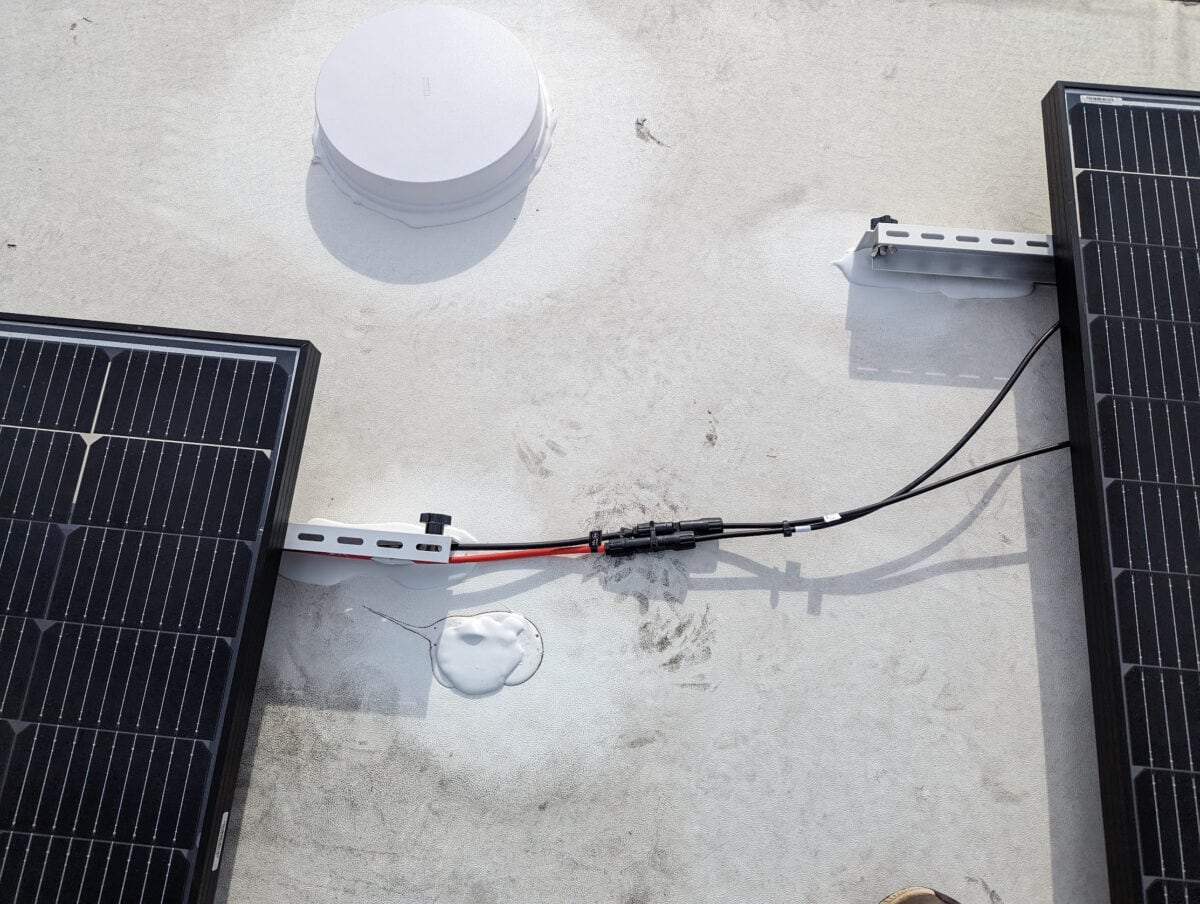
For DIY installers, I’d recommend having help to move them onto your RV roof. The panels don’t include a mounting system, so I used BougeRV’s 41-inch Adjustable Solar Panel Tilt Mount Brackets. The installation process is straightforward if you have some basic tools, SIKAFLEX glue, and lap sealant.
Originally, I planned to install the panels myself; however, life had other plans. My wife and I ended up trading our RV for a new motorcoach, and I opted to let the Camping World technicians handle the solar panel and charge controller installation. They used my SIKAFLEX tube and lap sealant and mounted them just as I had planned.
Testing the Solar Panel
I’ve seen other reviews of the solar panels, which were very positive. I was confident that the solar panels would perform well in ideal conditions – a bright, sunny desert day with no clouds and at the perfect angle. However, this is not the reality for most RVers most of the time. We often find ourselves in campgrounds, national parks, or boondocking locations that require us to point our RV in a certain direction, and we have no control over the panel orientation since they’re statically mounted on our roof.
My wife and I spend a lot of time in the Pacific Northwest each year, known for its rain, cool weather, and cloudy days. This allowed me to test the solar panels in less-than-ideal conditions. I took our new RV with the solar panels to a Walmart parking lot, a common boondocking location for many RVers, on a cool and partly cloudy day. The sun was obscured, and the panels weren’t receiving direct sunlight. I parked the RV purposely so that the panels did not face southward around 3 PM in mid-November. The sun was low, and the light came at an extreme angle, conditions that reduce a solar panel’s charging watts considerably. A typical 200 W panel only achieves full output in perfect conditions. In reality, you’d probably get 75 to 80% of that rating even in ideal conditions.
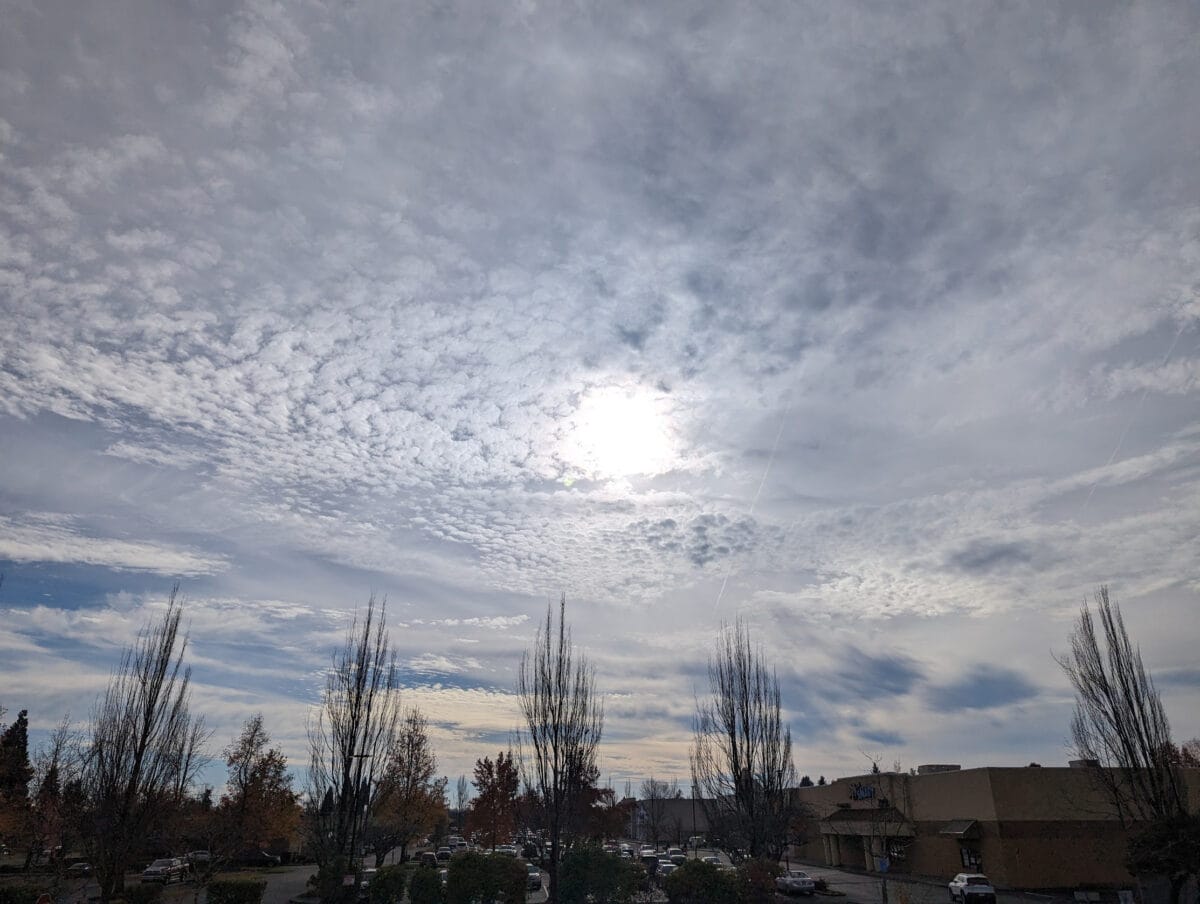
Honestly, I expected to get only between 10 and 30% of the rated wattage from the solar panels under the cloudy conditions. My goal wasn’t to set up perfect conditions for this review but to see how the panels performed in challenging situations.
You can see from the photo of the sky that it was a cloudy day with the sun mostly obscured. I first opened the app for the Sunflow 60 amp solar charge controller and checked the wattage from the panels while they were flat on the roof. Surprisingly, under poor conditions, the panels were pulling in 91W, about 22% of their rated capacity, close to my upper estimate of 30%.
Next, I tilted the panels using the tilt mounts, which was tricky. Tilting them too far, considering how I was parked, would’ve moved the front of the panels away from the sun. I found the right angle where I still got sunlight on the front and took advantage of the reflected light on the back. Initially, I was pulling 119 W, which increased to 150 W at one point – about 38% of their maximum output, exceeding my expectations.

On the right: The output increases while taking advantage of the bifacial part of the solar panel.
The fact that the panels performed so well under poor conditions indicates their quality and robust build.
I struggled to find cons related to the solar panels. They are well-built and function better than expected, and I anticipate getting a lot of use out of them.
Thoughts on the Mounting Brackets:
The tilting mounting brackets work well in theory, but I had some issues. To lower the panels for travel, you have to unscrew two thumb screws on each side, lay the panel flat, and then screw the aluminum support along with the solar panel down. This process was cumbersome, and I realized I didn’t need to have the supports screwed into the panel mount all the time. So, I screwed both thumb screws on one side for lifting and stored the supports in a side compartment, using them only when needed.
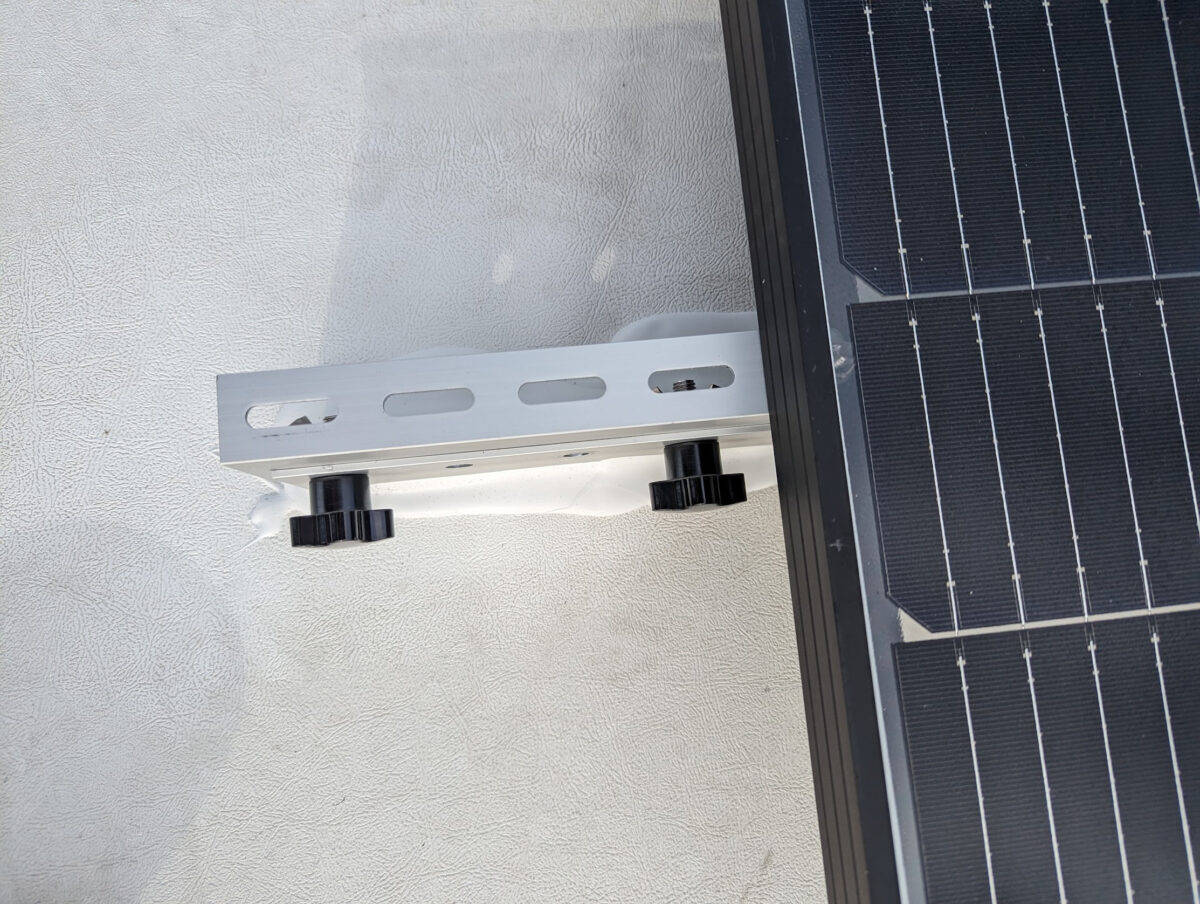
The design isn’t necessarily flawed; supporting the panels for tilting is complex, and the engineers likely did their best to simplify the process.
Pros:
- Bifacial panels
- Well-built
- Easy to install
Cons:
- Bifacial solar panels are more expensive (e.g., BougeRV 200W 12V 9BB Mono Solar Panel costs around $220, while bifacial 200 W panels are about $250).
- Manual tilting mounts are well-made but cumbersome to adjust. You need to climb onto the RV roof to tilt them, which is inconvenient but worth it for high-quality solar power while boondocking.
Final Thoughts and Recommendations
After thoroughly testing the BougeRV 200W Bifacial Solar Panels, I’m genuinely impressed. These panels are ideal for RVers who frequently face varying weather conditions and need reliable power. Their bifacial design, ease of installation, and robust performance make them a smart investment, particularly for those navigating less predictable environments like the Pacific Northwest.
For potential buyers, my tip is to consider your RV’s roof space and weight capacity, as these panels are larger and slightly heavier.
Explore BougeRV’s Range of Solar Panels
BougeRV offers a variety of solar panel options to suit different needs:
Special Discounts and Offers
Discount for Camper Smarts Readers: BougeRV is offering an exclusive discount for our readers. Use code campersmarts16 for a 16% discount on the Bifacial 200W Solar Panel and 60A MPPT Solar Charge Controller. Valid from 11/17/2023 to 04/30/2024.
Comment Below
I’d love to hear your thoughts or answer any questions about these solar panels. Feel free to share your experiences or ask for advice. And don’t forget to check out the review of the Sunflow 60A Solar Charge Controler.

